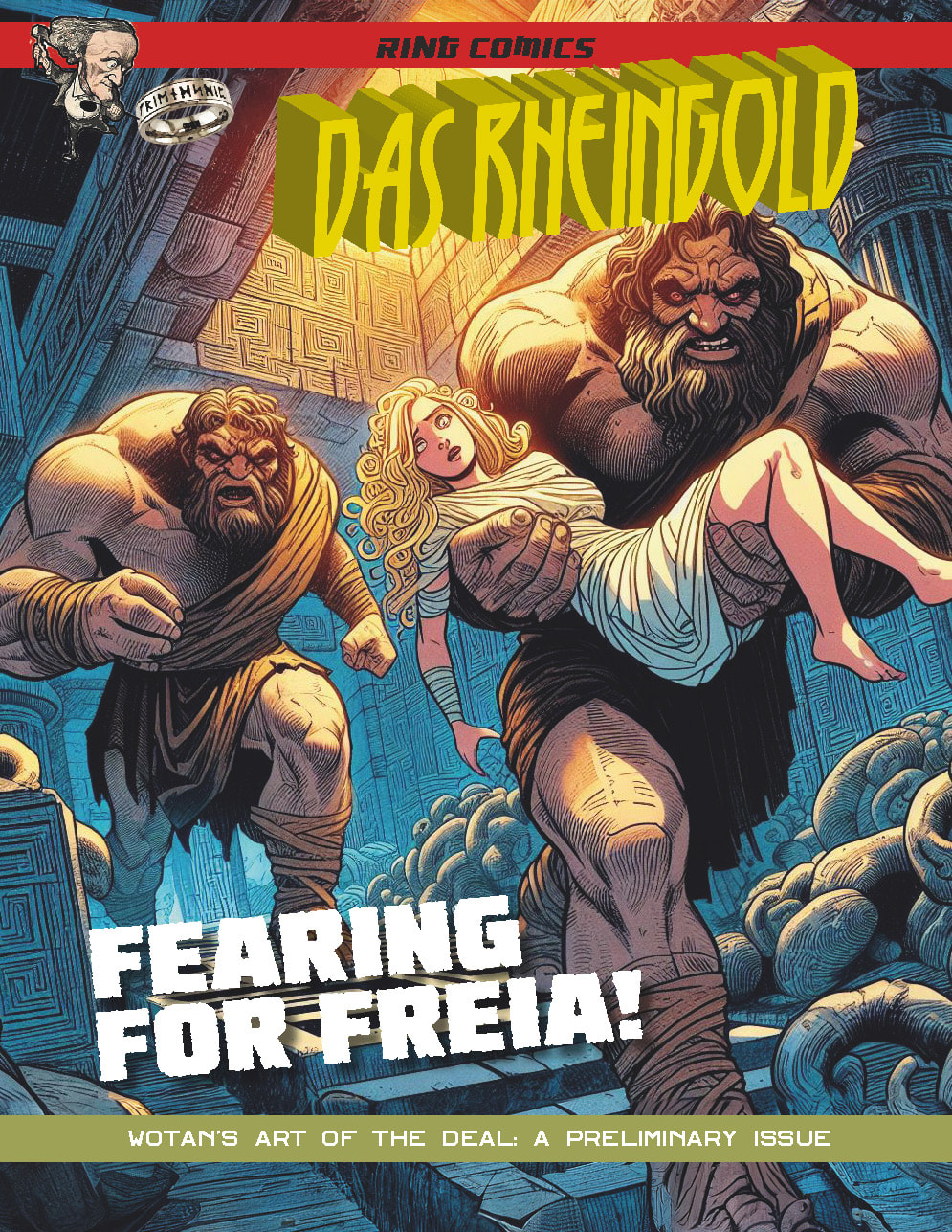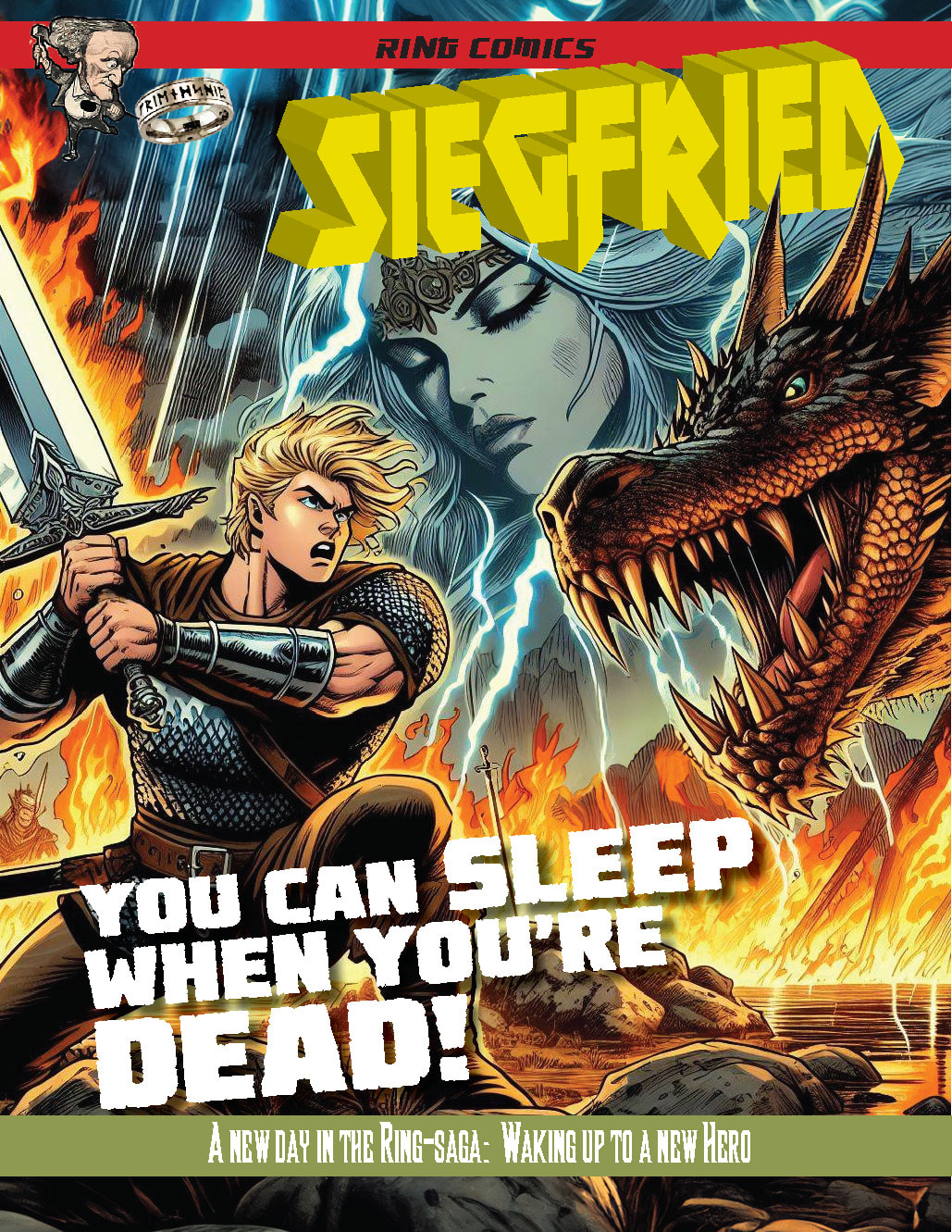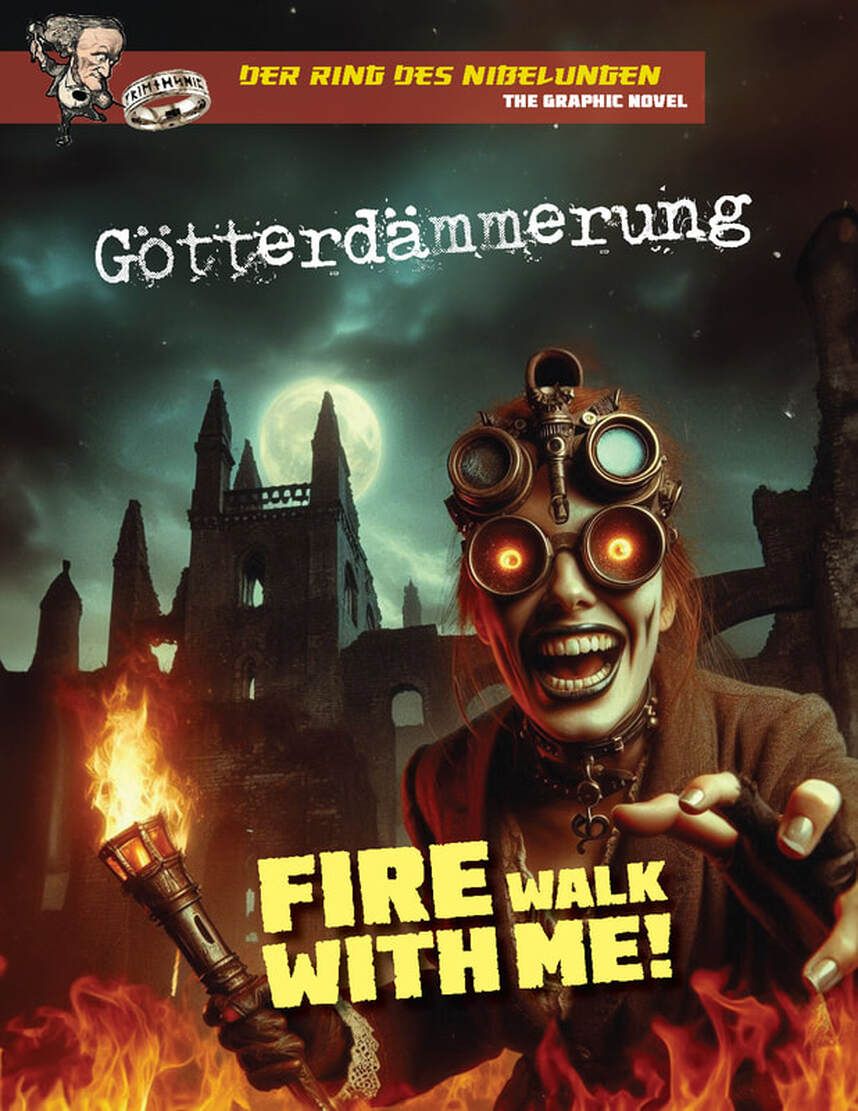About Wagner's Der Ring des Nibelungen in graphic novels. About graphic novels of the Ring that exist and those that don't (and can only be judged by their cover). This blog post includes images created using AI. Right from the premiere of the complete cycle in 1876 at the Bayreuther Festspielhaus, the operas of Der Ring des Nibelungen have inspired artists. The highly imaginative musical dramas (and their highly imaginative composer) were the inspiration for paintings, drawings and, later, comic books. We have, of course, the comic books (or graphic novels) of the complete Ring by P. Craig Russell on the one hand, and the series by Roy Thomas and Gil Kane on the other (before he could incorporate the Ring into a graphic novel, Roy Thomas was already warming up by incorporating the story of the Ring into a Thor-storyline for Marvel Comics: New Asgards for Old).
JUDGING A BOOK BY ITS COVER Especially fun for people who do know the Ring operas, I think, are the following covers of a comic book series that doesn't exist. It's a bit like making movie posters for films that were never made. A poster that evokes a film that exists only in your mind and, perhaps for that reason, fascinates all the more. As an extension of those film posters, which announce something that will never be seen, this is a series of comic books that tell the story of Richard Wagner's Ring des Nibelungen. Books that can only be judged by their covers. All images of the following covers are made with the help of an AI-image generator. Taking a moment of Das Rheingold, the adbuction of Freia by the giants, mentioned by Fricka, not seen on stage, and highlighting it in comic book fashion. So that the graphic depiction of that moment can take on a life of its own, beyond the original story. I have always found the combination of Wagner and the gothic element very attractive. Der fliegende Holländer is, of course, the most obvious opera to make that association but Die Walküre also lends itself perfectly to a gothic atmosphere. What if Hunding were a vampire? Siegfried is essentially an opera about characters trying to sleep ((this goes for both Fafner and Brünnhilde). Until they are awakened by the hero of the Ring, that is. The cover image for the third part of the Ring is in straightforward, action-packed (super)hero-style. Although ravens are definitely horror-worthy, it's not Wotan's ravens but a sky full of bats on this cover for Götterdämmerung where the final part of Wagner's tetralogy gets a push towards a Hammer-movie. With Brünnhilde as a witch-like ghostly apparition. EPILOGUE Of all the artists who ventured into Wagner's Ring, Arthur Rackham's drawings from the beginning of the 20th century are perhaps the most famous. Anticipating the graphic novel and largely determining the image we now have of the world of Der Ring des Nibelungen. A fantasy world that we now regard as a more or less natural representation of what the Ring world should look like. Russell's and Thomas's graphic novels are heavily indebted to Rackham's art. But in search for a staging on paper there is, of course, no harm in thinking beyond that kind of 'natural' visualisation. To ponder about visual material in ways as it already happens in theatres (I hear you shout, "Oh no, spare me the Regietheater!"). To illustrate a core and essence of the Ring-story in ways only a comic book can. (I am thinking of an artist like Dave McKean, artist of the outstanding Batman / Arkham Asylum). The design of that ultimately lies within the realm of creative freedom and an audience willing to open up to an artist's vision. The latter will not be a problem because Wagner's Ring continues to fascinate, not only musically but also theatrically and visually. Software: DALL-E, Adobe Photoshop & Illustrator
- Wouter de Moor
0 Comments
Leave a Reply. |
TIMELINE
July 2024
|









 RSS Feed
RSS Feed